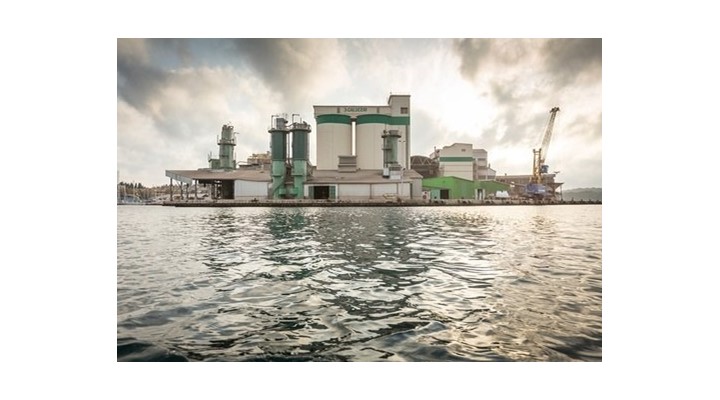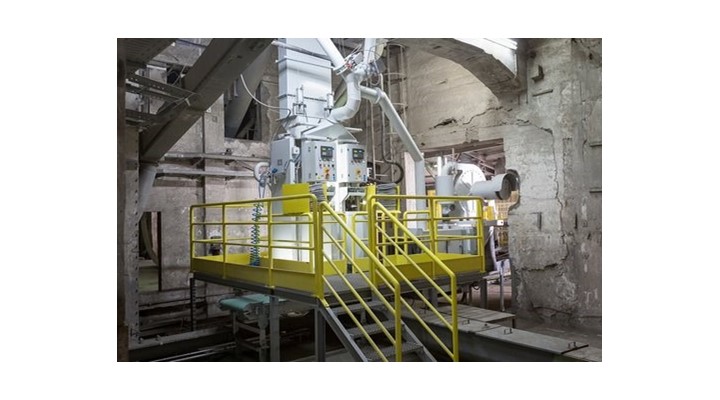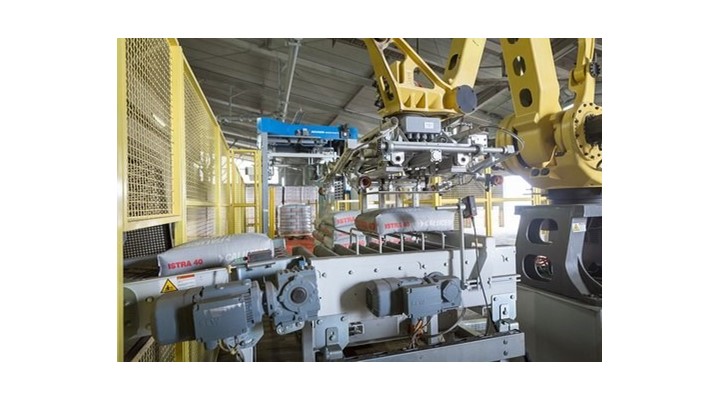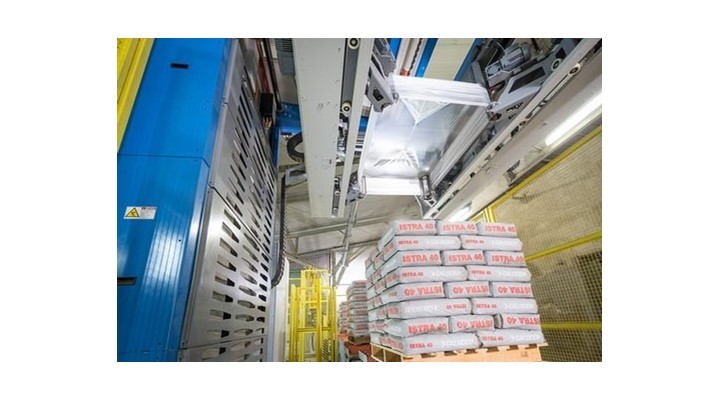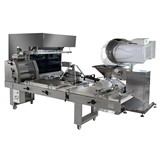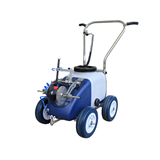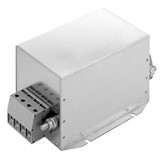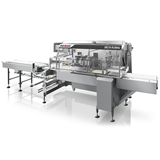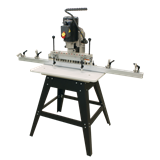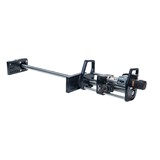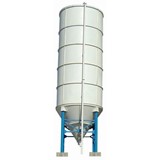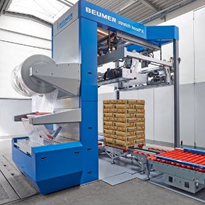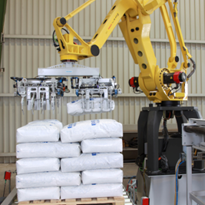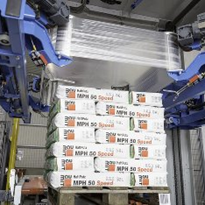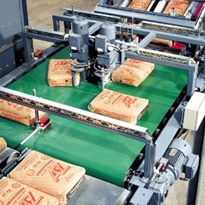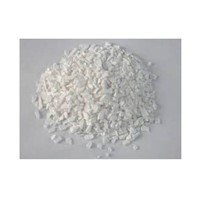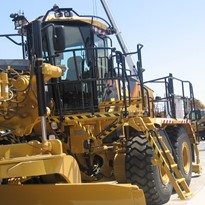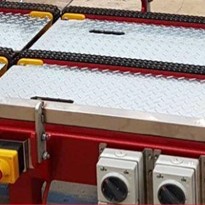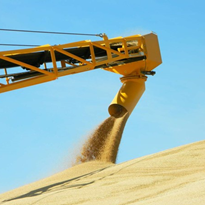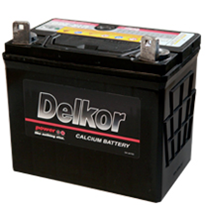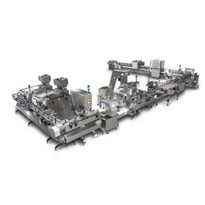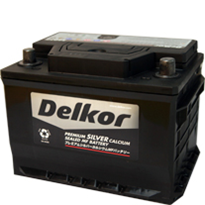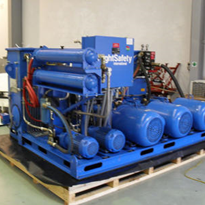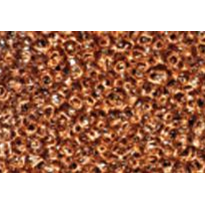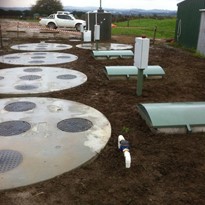Calucem d.o.o., a member of Calucem Group and based in Pula, Croatia, is a manufacturer of calcium aluminate cements that are predominantly used in the refractory industry. The company is now replacing its previous packaging line with BEUMER filling, palletizing and packaging systems. This BEUMER solution will help simplify the process of moving material into the packaged units and is a more energy-efficient option. BEUMER provided an entire line from one single source. Instead of a turbine filling machine, which is typically used in the cement industry, a pneumatic filling system was used to allow for a quick material change without any loss.
Calucem d.o.o. is one of the leading suppliers of this building material that is sometimes also referred to as high-alumina cement. "It is resistant to high temperatures, chemical substances and corrosion", explains Alfred Blažina, managing director of the cement plant. "Due to these properties, it is used in the refractory industry, foundries, kilns and combustion chambers as well as in the building industry." Calcium aluminate cements can be found in rapid repair mortars, ceramic adhesives and sealing material. This hydraulic binder is also particularly important for refractory concrete. It influences the rheology, the setting characteristic, the sifting properties and the chemical resistance. "We export our cement to more than 60 countries and are the world's number 2 supplier in this market", emphasises Alfred Blažina.
The required solution: compact, low in maintenance and energy-efficient
Calcium aluminates are produced when limestone or bauxite is burned in electric arc furnaces at temperatures above 1,500 degrees Celsius. "The chemical composition changes depending on the application", explains Alfred Blažina. There is a growing demand for more resistant high-performance products. HiPerCem is a new addition to the product portfolio, used for the formulation of highly sophisticated refractory concrete. "The very innovative concept is based on a high calcium content, combined with an optimised grain size distribution", explains the managing director. Additionally, there are products for conventional ramming mixes and casting compounds.
After manufacturing, these different mixtures are ground, filled into bags, then palletised, packaged in film and transported to customers and retailers. "Up until now, we had used systems that were high energy intensive and high in maintenance", says Alfred Blažina. Calucem employees were responsible for changing the filling system from one cement mixture to another, which was never a trouble-free process. Depending on its composition, the material can be more fine or coarse. After a mixture change, large amounts of dust were generated, meaning material was lost. In search of a new solution and a suitable business partner, Calucem quickly found the intralogistics expert BEUMER. "Our product has very specific properties", explains Alfred Blažina. "We needed a supplier who we could develop a solution with for our particular product."
From filling to packaging - everything from one single source
As a single-source provider for filling, palletising and packaging technologies, BEUMER Group supports its customers with sustainable solutions from a single source. "We installed the entire line ", says David Žargi, BEUMER representative for the Western Balkans and supervisor for the Pula cement plant. The specialists integrated the machines and systems using intelligent automation and linked them efficiently. Calucem needed compact systems that work efficiently, require little maintenance and can be operated intuitively and easily by the employees", says David Žargi.
Air instead of turbine filling machines
"The cement industry normally uses turbine filling machines", explains Stefan Bonenkamp, commissioning engineer at BEUMER. "They are particularly suited for free flowing products, such as cement." But in order to guarantee loss-free filling of varying compositions, BEUMER technicians installed a BEUMER fillpac® filling machine with two spouts that operates according to the air filling principle. This particular material can be finer than regular Portland cement, but it can also be pulverised or gritty.
Air filling machines are especially used in the food industry.They use a blower to fluidise the material that is to be filled, e.g. flour or cacao powder. These products can then be filled into bags, gently and precisely, "without mechanical stress and at minimal air consumption", explains Stefan Bonenkamp. The product is filled according to the gross weight principle, i.e. the bags are weighed during the filling process. The BEUMER fillpac® is therefore equipped with calibration-capable weighing equipment. This electronic weighing ensures exact filling degrees for the BEUMER fillpac®. Special software supports permanent communication between the balance and the filling spout.
The product is then transferred through a rotary flap into the filling boiler. The ventilation of the boiler floor and of the upper part of the boiler can be regulated separately, which guarantees a continual product discharge. It creates a steady product flow with minimal compressed-air consumption. A special filling nozzle is equipped with a vent duct and an ejector that operates in cycles, extracting air from the bag during filling. After each filling process, the filling nozzle is cleaned by air pressure. This prevents the filled bag from being soiled. "The quantity of the conveying air can be adjusted separately, depending on the product", says Bonenkamp.
Space-saving, reliable and energy-efficient palletising solution
Calucem needed a compact and energy-saving solution for the fully automatic, efficient and above all, fast palletising of the bags. As a single-source supplier, BEUMER provided the fully automatic BEUMER robotpac®, solving complex palletising and de-palletising challenges reliably and efficiently. It distinguishes itself through its remarkable precision and availability, as well as its gentle product handling. An ultrasound system ensures the precise measurement of the bags before they are palletised. This way, the position of the item can be exactly calculated and the bags can be placed precisely and gently. The precision guarantees an optimal stack configuration. This is not only representative of brand quality to the end customer; it also ensures that the stack remains stable during shipping and storage. The BEUMER robotpac® palletises up to 600 bags per hour. Two gripping tools are used: a suction gripper, that places a paper sheet on the pallet, and a fork gripper, that palletises the bags in the exact position on the carrier. "The flexibility of the BEUMER robotpac® allows the customer to implement even complex processes with varying frame parameters", explains David Žargi. In addition, the robotic palletiser is very robust which ensures a secure operation even under extreme conditions. "The drives work reliably, highly efficiently and quietly. Which was an important precondition for the cement manufacturer", remembers the BEUMER expert.
Compact, fast and practical packaging
Roller conveyors transport the palletised bags to the packaging system. "In order to keep the entire line compact and energy-efficient, we use the BEUMER stretch hood® A at this point in the line, a new machine from our portfolio", says David Žargi. The high capacity packaging system from the stretch hood series was given a complete redesign. We analysed and optimised different components during the development phase." We made it easier and safer for the user to operate this system compared to others. In order to facilitate the work for the maintenance personnel and to ensure high system availability, the new packaging system no longer needs a platform. Maintenance work, such as changing the blades or the sealing bars, is now handled at floor level. The operator opens a drawer, providing free access to blades and sealing bars. Additional benefits include the compact design and the resulting low height and small footprint.
A new film transport system, that is particularly gentle on the material, introduces the previously formed film hood into the system. On its way to the crimping and stretching unit, the sealing seam on the film hood cools down so that it can be crimped without losing time. Energy-consuming cooling units and long cooling times become superfluous. The pallets are packed in a shorter cycle time, which increases the packaging capacity at a lower consumption rate. Economical engines and a lower demand in compressed air optimise the energy balance. "The palletised goods are clearly visible through the smooth surface of the transparent, highly flexible film. Film packaging protects the goods against the environment and humidity. It also substantially improves transport safety", describes David Žargi.
Easily operated
The intralogistics specialist has introduced the BEUMER Group Human Machine Interface (HMI). This newly-developed operator panel with an optimised user interface and graphical navigation for operating the systems offers an even more ergonomic workflow to the user. This easily understandable and intuitive interaction concept helps to define efficient working sequences. The soft-touch panel uses pictograms to guide the user through the machine control menus. The panel also gives the operator access to all required training programs and content. The systems are controlled by a Siemens SIMATIC S7-300.
Alfred Blažina's eyes follow the fork-lift truck that transports a pallet with packed bags to the goods issue area. "We have implemented this project hand in hand with BEUMER. The result is a packaging line that is customised to our specific requirements." The cement manufacturer was convinced of the excellent technical cooperation during the planning and development phase, as well as optimal adaptation of the systems. And because BEUMER provided everything from one single source, Calucem has only one contact for the entire system. This was also very important for Alfred Blažina. Because even these high-quality systems need maintenance and service. If necessary, BEUMER service personnel can visit the plant to check the system and perform any required adjustments.


